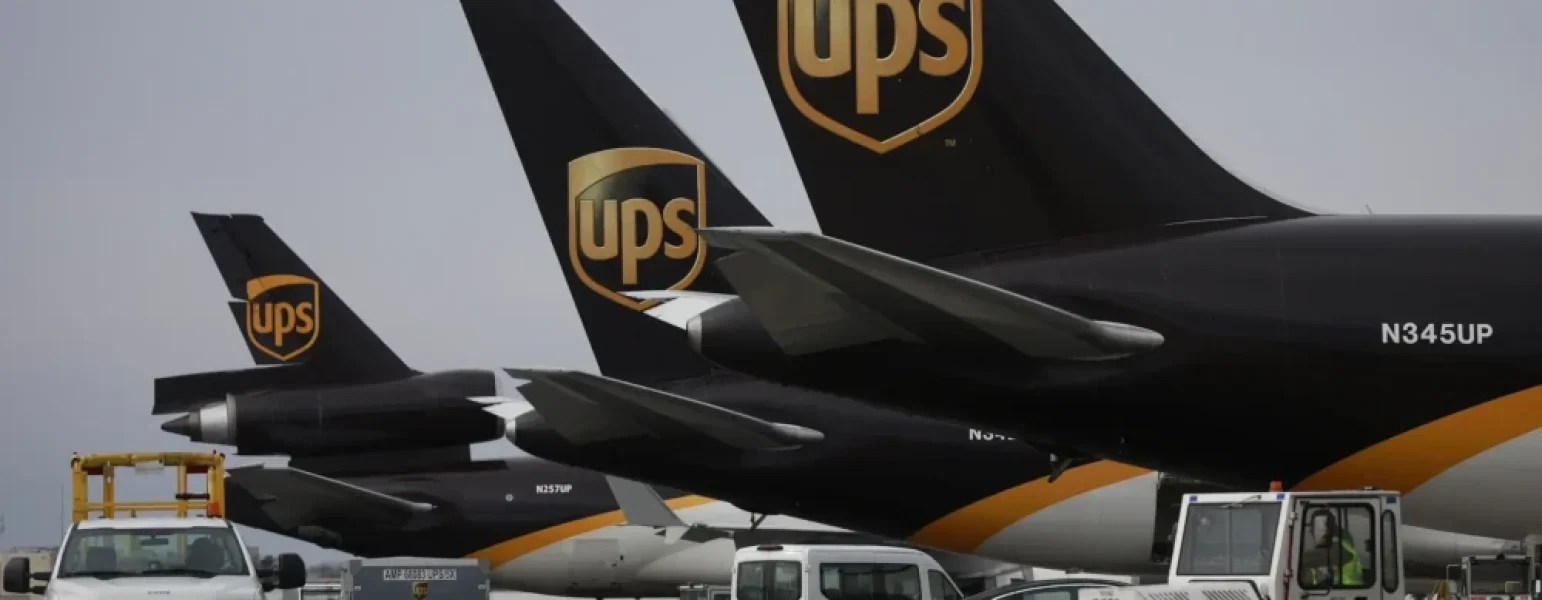

- BLOG
How does UPS Schedule Delivery?
Published: February 15, 2024 | Updated: July 29, 2025
Route Optimization API
Optimize routing, task allocation and dispatch
Distance Matrix API
Calculate accurate ETAs, distances and directions
Directions API
Compute routes between two locations
Driver Assignment API
Assign the best driver for every order
Routing & Dispatch App
Plan optimized routes with 50+ Constraints
Product Demos
See NextBillion.ai APIs & SDKs In action
AI Route Optimization
Learns from Your Fleet’s Past Performance
Platform Overview
Learn about how Nextbillion.ai's platform is designed
Road Editor App
Private Routing Preferences For Custom Routing
On-Premise Deployments
Take Full Control of Your Maps and Routing
Trucking
Get regulation-compliant truck routes
Fleet Management
Solve fleet tracking, routing and navigation
Middle Mile Delivery
Optimized supply chain routes
Construction
Routes for Construction Material Delivery
Oil & Gas
Safe & Compliant Routing
Food & Beverage
Plan deliveries of refrigerated goods with regular shipments
Table of Contents

UPS is an efficient and reliable carrier that serves millions of customers worldwide. It delivers packages safely and on time. It prioritizes deliveries to businesses during working hours and extends residential deliveries into the evenings. It helps in managing logistics complexities. Understanding the time of day UPS stops delivering and how various factors like holidays and traffic congestion impact the delivery schedule is essential. With the proper knowledge and resources, customers can easily navigate UPS delivery schedules and track their packages.
The UPS delivery schedule varies slightly throughout the week. The standard delivery schedule for residential addresses is from 9 am to 7 pm. During the holiday season, the timings are extended until 9 pm, and delivery drivers must work overtime.
Whereas, in the case of business addresses, the delivery generally takes place between 8 am and 5 pm during the standard business days.
UPS makes residential and commercial deliveries from Monday to Saturday and reserves Sundays for residential deliveries. It often uses the term “end of day,” which varies depending on whether the package is going to a residential or commercial address.
Generally, UPS makes weekly deliveries, however weekday deliveries are more common.
Weekdays: UPS typically operates from 9 am to 7 pm on weekdays. This schedule can vary depending on the location, but generally, shipment begins in the morning and ends in the early evening.
Weekends: It also operates on weekends, but an extra fee may apply. It usually delivers to most residential and commercial addresses on Saturdays and reserves Sundays for residential deliveries. On Saturdays, packages are shipped via Ground or 3-day service, whereas on Sundays, they are shipped via 2nd-day or next-day service.
UPS is widely famous for its reasonably accurate delivery times. Its estimated delivery time is spot-on. It is important to provide accurate ETAs for the business’s future growth. It marks most ground deliveries with tracking numbers that notify customers when their package moves locations, like when dropped off at a UPS facility, when moved out for delivery, etc.
Mostly, the packages arrive on the initial delivery date, but if any delay occurs, the UPS tracking service updates the customers in real-time. UPS even has a customer service line, which can help in case notifications are not coming or are not updating properly.
UPS is famous for its efficiency and reliability. It prioritizes deliveries to businesses during working hours and extends residential deliveries into the evenings. It provides two types of services which are listed below:
There are many factors that affect UPS schedule delivery. Some of those are:
Although UPS has a great on-time delivery record, sometimes delays can happen. The best option is to stay calm and check for updates. Traffic and influxes in demand cause deliveries to be delayed. There can be many reasons for a delay in delivery, such as the holiday season, staff shortages, and overbooked routes.
Check the tracking information if delivery doesn’t arrive on an estimated date. If there is no update on the delivery location, call the UPS customer service line or even pick up their package from the nearest UPS store.
Package tracking is a crucial part of any delivery process. It notifies the customers about their shipment status and allows them to anticipate and plan for its arrival.
UPS offers tracking services. It provides a tracking number for each shipment; customers can enter it on their official website and view real-time updates on the delivery progress. It helps people anticipate and prepare for the arrival of their order.
UPS uses various tracking messages during shipment. Below is a list of commonly used tracking messages, along with their meaning:
Besides UPS, other courier services, such as USPS, FedEx, and DHL, can handle package delivery. Moreover, e-commerce platforms like Amazon and Flipkart have their delivery services. Below are some of the best alternatives for UPS:
UPS is crucial for the smooth flow of the supply chain and enhances the customer experience. It is an integral part of the logistics industry. How late UPS delivers depends on multiple factors like geographical location, chosen service level, and package volume. NextBillion.ai provides various services that manage complexity, improve the delivery experience, and lower the shipping cost.
Businesses can manage their delivery logistics more effectively with NextBillion.ai products, such as our Route Planner Tool, accessible via our NCC console. We provide a comprehensive suite of APIs and SDKs to streamline the process, whether it’s scheduling deliveries, optimizing routes using our Route Optimization API, or tracking assets in real time using our Live Tracking API. By bringing deliveries in-house, businesses can find a viable alternative to traditional couriers such as UPS. Our supply chain and logistics solution streamlines the entire process, resulting in more efficient and profitable deliveries. This approach can significantly reduce last-mile delivery costs while increasing customer satisfaction.
Rishabh Singh is a Freelance Technical Writer at NextBillion.ai. He specializes in Programming, Data analytics and technical consulting, turning complex tech into clear and engaging content.